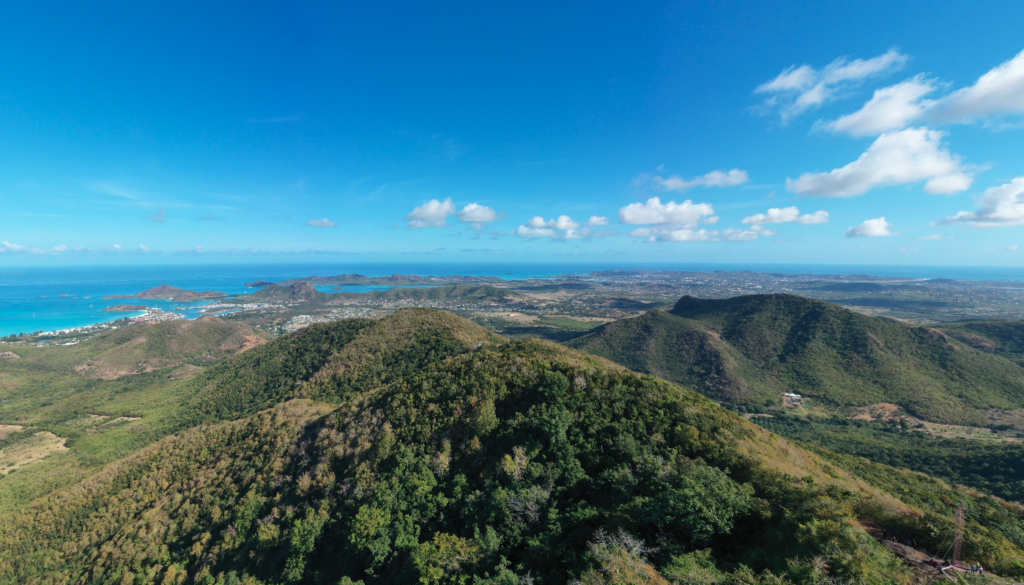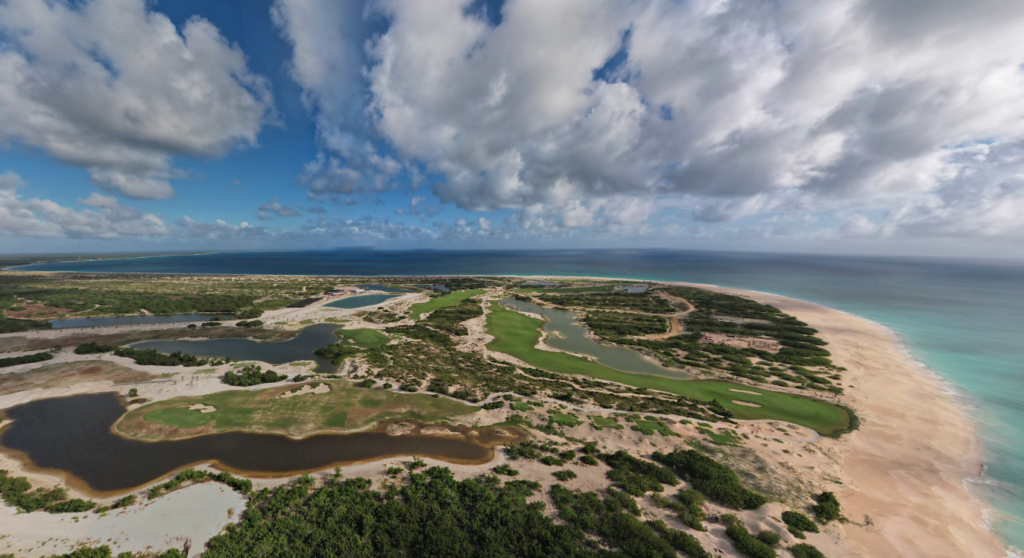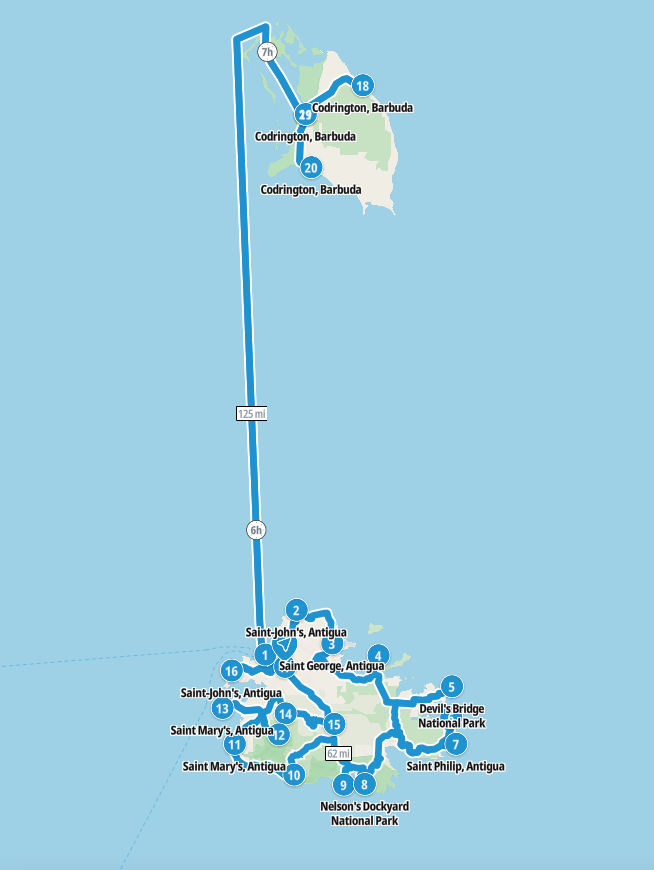Antigua and Barbuda – Let’s explore here

What’s it like in Antigua and Barbuda?
Antigua and Barbuda is a country that consists of the two major Caribbean islands, as well as a number of much smaller islands. It’s a relatively small country, just a bit larger than the Isle of Wight, England, UK, with Antigua being approximately 10 miles (16 km) long and 10 miles wide (16 km) , and Barbuda being 8 miles (13 km) by 8 miles (13 km). Antigua is around 25 miles (40 km) from Barbuda.
There are no mountains on Antigua and Barbuda with only a small central highland region. The highest point is Boggy Peak at 1,319 ft (402m) above sea level.
Antigua and Barbuda’s population is around 101,000 (2023), about one in five of whom live in the capital, St. John’s. Only around 1,700 people live in Barbuda. The country relies heavily on tourism like many other Caribbean islands.

A bit about the history of Antigua and Barbuda
Early History and Indigenous Peoples
The islands of Antigua and Barbuda were originally inhabited by the Arawak and Carib peoples before European colonisation. The Arawaks settled in Antigua, while the Caribs occupied Barbuda. These indigenous groups had developed rich cultures and agricultural practices but were displaced by the arrival of Europeans.
European Colonisation
Christopher Columbus arrived in Antigua in 1493, but it was the British who established a permanent presence on the islands in the early 17th century. Antigua was settled in 1632, and Barbuda followed shortly afterward. The British established sugar plantations and used enslaved Africans as labour, which became the backbone of the island’s economy.
Slavery and Sugar Economy
During the 18th century, Antigua and Barbuda became major centers for sugar production, with large numbers of enslaved Africans working on the plantations. The wealth generated from the sugar trade fueled the island’s economy but also contributed to the deep social and racial divisions that existed throughout the colonial period.
Abolition of Slavery
Slavery was abolished in the British Empire in 1834, and Antigua and Barbuda’s economy began to shift. The former enslaved people struggled to adapt to new economic realities, as the plantation system was no longer viable without forced labour. The islands also faced challenges from competing sugar producing regions.
Path to Independence
Throughout the 20th century, Antigua and Barbuda gradually moved toward self governance. In 1967, the islands gained internal self government, and in 1981, Antigua and Barbuda achieved full independence from the United Kingdom. It became a constitutional monarchy, with the British monarch as the head of state, represented by a governor general.
Modern Era
Since independence, Antigua and Barbuda has developed a tourism based economy, capitalising on its beautiful beaches and warm climate. The country is also known for its offshore banking industry and vibrant cultural life. Antigua and Barbuda has remained politically stable, though it faces challenges such as economic dependency on tourism and vulnerability to natural disasters. The country is a member of the Commonwealth of Nations and continues to promote regional cooperation and global partnerships.

Antigua and Barbuda road trip
Antigua and Barbuda is our 18th planned stop on our Roa trip through the islands of the Caribbean. Having explored Saint Kitts and Nevis, our next stop is Montserrat.
Travelling overland between the islands is quite prohibitive due to the lack of transportation options. Travelling between different island countries via ferry is possible, however, ferries only operate between some islands. Chartering private boats between islands is also possible, although travelling with a car in this way is prohibitive. Flying is another option, although again, flights only operate between some islands.
Map of our road trip through Antigua and Barbuda

This is a map of our planned route around the islands of Antigua and Barbuda, starting and ending in the capital, Saint John’s.
Weather in Antigua and Barbuda
When is the best time to visit Antigua and Barbuda?
The best time to visit Antigua and Barbuda is from December to April. During these months, the islands have 7-8 hours of sunshine per day and rainfall of 1.5 – 3.2 inches (39 – 81mm) per month. The temperature ranges from 23 – 29°C (73 – 85°F).
When is the worst time to visit Antigua and Barbuda?
The worst time to visit Antigua and Barbuda is from July to November. During these months, the islands still have 7-8 hours of sunshine per day. However, humidity rises and it rains an average of 3.2 – 5.3 inches (81 – 135mm) per month. The temperature ranges from 24 – 31°C (75 – 88°F).
Hurricane Season in the Caribbean
Hurricane season in the Caribbean runs from June 1 to November 30. Storms tend to be more frequent and more severe in the latter half of the season.
Hurricanes are least likely during December, January and February.
Travel in and around Antigua and Barbuda
Ferries between Antigua and Barbuda
Barbuda Express Ferries travels between Antigua and Barbuda every day.
Ferries to other Caribbean island countries from Antigua and Barbuda
The Montserrat ferry service is no longer running (2024). There are no ferries operating between Antigua and Barbuda and other Caribbean island countries.
Flying to other Caribbean island countries from Antigua and Barbuda
There are various airlines that fly between St Kitts and Nevis to Antigua and Barbuda.
Fly Montserrat and SVG Air fly between Antigua and Montserrat every day.
Inter Caribbean Airways flies between Antigua and the British Virgin Islands.
What’s it like to drive in Antigua and Barbuda?
They drive on the left hand side of the road in Antigua and Barbuda. Main roads are generally in fairly good condition, however many minor roads are unsurfaced dirt tracks. Driving standards are quite poor.
A temporary local driving licence is required to drive in Antigua and Barbuda. Car hire companies usually help with the process, or one can be obtained at the Transport Board or local police stations. A UK driving licence is required to obtain a local temporary licence.
We’ve also created a dedicated page to driving abroad, which you might find helpful 🙂
What currency do they use in Antigua and Barbuda?
In Barbados they use the East Caribbean dollar. Cash is widely used. The use of credit / debit cards is widely accepted in major cities, although not in rural areas. Travellers cheques are not accepted in the main. There are ATMs in cities, although not all accept foreign issued cards.
You should make yourself aware of the amount that your bank charges you for using credit and debit cards abroad. Often credit cards are cheaper for purchasing items directly, and for withdrawing cash from ATMs.
What language do they speak in Antigua and Barbuda?
They speak English and Creole in Antigua and Barbuda.
What time zone is Antigua and Barbuda in?
Remember, when you’re planning your next trip to take a look at what time zone it’s in.
Do I need a visa to visit Antigua and Barbuda?
We’ve created a dedicated, more comprehensive page on visas, which you should find helpful. Check it out!
Is wild camping legal in Antigua and Barbuda?
No, wild camping is not widely accepted in Antigua and Barbuda.
What plug / socket type do they use in Antigua and Barbuda?
In Antigua and Barbuda they use plug / socket types A and B.


Health issues in Antigua and Barbuda
Is it safe to drink water in Antigua and Barbuda?
Yes, it is safe to drink tap water in Antigua and Barbuda. Bottled water is also readily available across the country.
What vaccinations are required for Antigua and Barbuda?
This NHS website is kept up to date with all relevant information on vaccinations in Antigua and Barbuda.
Phones in Antigua and Barbuda
What is the country calling code for Antigua and Barbuda?
The country calling code for Antigua and Barbuda is +1 268
What are the emergency phone numbers in Antigua and Barbuda?
- The emergency number for police in Antigua and Barbuda is: 911 / 999
- In Antigua and Barbuda, the emergency number for ambulance is: 911 / 999
- The emergency number for fire in Antigua and Barbuda is: 911 / 999
If you’ve got some useful info that you’d like to share, let us know!
And don’t forget to check out all the other pictures!
